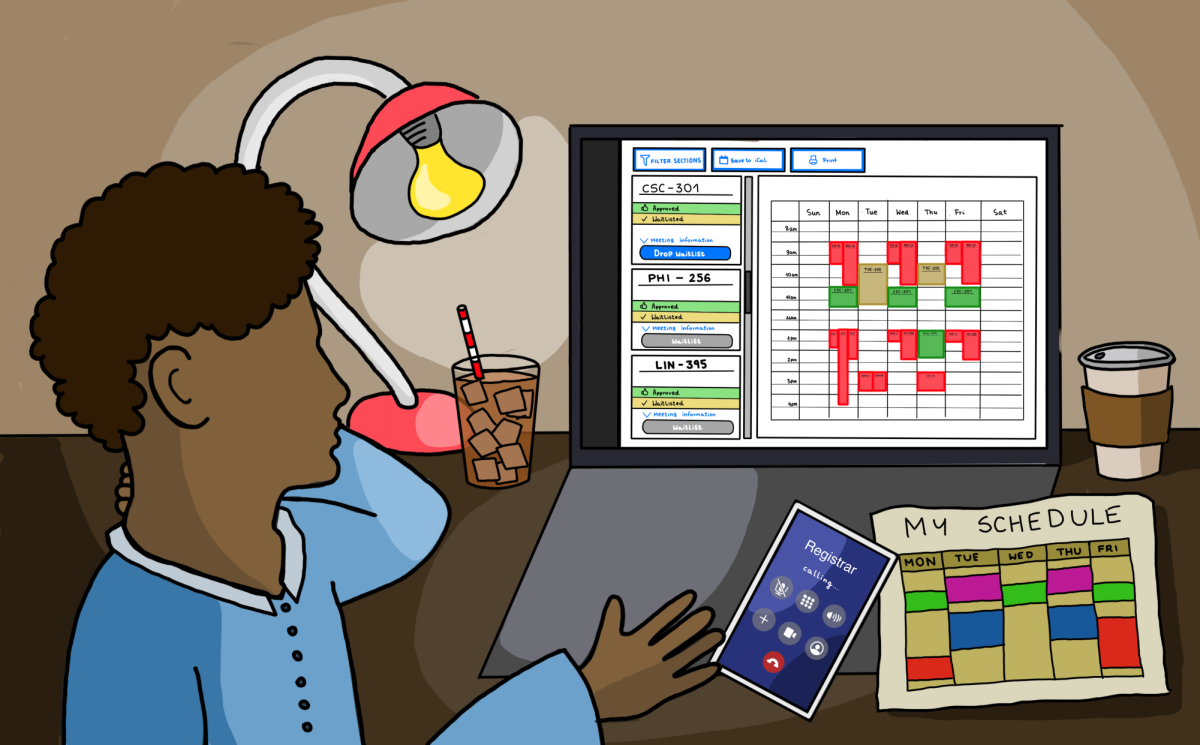Registration for classes in the spring `24 semester was, in a word, complicated. Technological issues led to confusion and delay amongst both students and staff, even though the system was initially designed to be more equitable and free of human error.
The most recent iteration of the registration process came from an initial design that was developed in the 2021-2022 school year, said Catherine Ashton, registrar at the College. Ashton stated that this method of priority registration arose from faculty concerns that the traditional method of registration –– fourth years register first, third years second, and so on– was unfair. She also said that an important issue is making sure students do not feel pressured to declare a major in their first two years.
Professor Erik Simpson, English, said that he believes a system of priority such as the one the College has recently developed is fairer than the typical method of priority.
“We are trying to make a system that’s more equitable than most registration systems at other places,” Simpson said.
“I’ve done a lot of registration systems and it would be my expert opinion that [the traditional way] is a more appropriate way to go about registration,” said Ashton. However, she also stated that the administration should be in charge of conceptualizing what the process looks like.
The first priority registration system was implemented in the fall `22 semester, and further changes were made in spring `23. Ashton said that this brings us to now, where a further tweaked system was intended to automate much of the manual work that may have led to human bias and error in the past, such as priority lists and invites to classes.
Additionally, Ashton said that she wanted students to be able to make a more informed decision about which classes to register for. She said that while previously, students were able to enroll in up to 9 credits in the first round, and then get cut from classes that were filled, waitlists were intended to be more intuitive and allow students to see how many people are attempting to enroll in the class. Further, this was the first semester that waitlist priorities were published, which was also intended to allow students to make thoughtful choices about their schedule, Ashton said.
Ashton maintains that the automated processing of waitlists does work in theory, but the issues arose because the system had a glitch she was not aware of before. This glitch disrupted the initial processing of waitlists in round one.
“And once that didn’t go out appropriately, then we were stuck trying to problem solve what was the issue, and slowing everything down, and switching up to a much more manual process, which has taken longer, and I think has created a lot more anxiety than it should have,” Ashton said.
Simpson stated that he understood the overall process well and felt comfortable working with his advisees. He also said, “Sometimes, I wasn’t, I didn’t feel like I was in complete command of what was happening, but I’m not sure anyone did.”
Simpson also stated that he does believe in continuing to try to design a more equitable system, but, “it turns out that fighting the tendencies of the software is harder than I think anyone anticipated, certainly harder than I anticipated. So this year, it became this long, laborious, stressful process that put an enormous burden on the registrar’s staff.”
Ashton said that she and her staff are still finding and fixing glitches in the system. “I now know what I didn’t know,” she said.
When asked if he thinks that the registration process should change again next semester, Simpson said, “I don’t think anyone would want the process to play out in the same way next semester. I think everyone wants some stability in the system so that we can anticipate what is going to happen … those two values contradict each other.”
He also said, “And I mean, that the main thing that I would want to say is that this was really difficult, but it’s because we were trying to do something hard and trying to do something that was worth trying to do.”




















































